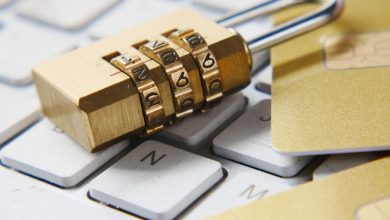How to Use Anti-Phishing Tools for Crypto Security

- Understanding the Importance of Anti-Phishing Tools in Crypto Security
- Types of Anti-Phishing Tools Available for Crypto Investors
- Step-by-Step Guide on Setting Up Anti-Phishing Measures for Your Crypto Accounts
- Tips for Recognizing Phishing Attempts and Avoiding Scams in the Crypto Space
- Comparing Different Anti-Phishing Tools and Their Effectiveness in Protecting Your Assets
- Best Practices for Implementing Anti-Phishing Measures to Safeguard Your Cryptocurrency Investments
Understanding the Importance of Anti-Phishing Tools in Crypto Security
Cryptocurrency security is a top concern for investors and traders in the digital asset space. With the rise of phishing attacks targeting crypto users, it has become more important than ever to implement anti-phishing tools to protect your assets. These tools are designed to detect and prevent phishing attempts, which are fraudulent activities that aim to steal sensitive information such as login credentials, private keys, and wallet addresses.
By using anti-phishing tools, crypto users can significantly reduce the risk of falling victim to phishing scams. These tools work by analyzing websites and emails for signs of phishing activity, such as suspicious links, fake login pages, and deceptive content. They can also provide real-time alerts and warnings to help users identify and avoid phishing attempts before it’s too late.
One of the most popular anti-phishing tools in the crypto space is browser extensions that can be installed on popular web browsers like Chrome, Firefox, and Safari. These extensions can automatically detect phishing websites and alert users when they visit a potentially dangerous site. Additionally, some anti-phishing tools offer features such as password managers, two-factor authentication, and encrypted communication to further enhance security.
Types of Anti-Phishing Tools Available for Crypto Investors
There are several types of anti-phishing tools available for crypto investors to enhance their security measures. These tools are designed to protect users from falling victim to phishing scams, which can result in the loss of sensitive information or funds. By utilizing these tools, investors can mitigate the risks associated with phishing attacks and safeguard their crypto assets.
- Browser Extensions: Browser extensions such as MetaMask and Cryptonite are commonly used by crypto investors to detect and block phishing websites. These extensions work by analyzing website URLs and alerting users if they are attempting to access a known phishing site.
- Anti-Phishing Software: Anti-phishing software like PhishTank and OpenDNS provide real-time protection against phishing attacks. This software can identify and block malicious URLs, emails, and other forms of phishing attempts before they reach the user.
- Two-Factor Authentication (2FA): Two-factor authentication is a security measure that requires users to provide two forms of verification before accessing their accounts. By enabling 2FA on their crypto accounts, investors can add an extra layer of protection against phishing attacks.
- Security Awareness Training: Security awareness training programs educate users on how to identify phishing attempts and protect themselves from falling victim to scams. By participating in these programs, investors can learn best practices for staying safe online.
Overall, by utilizing these anti-phishing tools, crypto investors can significantly reduce their vulnerability to phishing attacks and enhance the security of their digital assets. It is essential for investors to stay vigilant and proactive in protecting their funds from malicious actors in the crypto space.
Step-by-Step Guide on Setting Up Anti-Phishing Measures for Your Crypto Accounts
Setting up anti-phishing measures for your crypto accounts is crucial to protect your assets from malicious attacks. Here is a step-by-step guide to help you enhance the security of your accounts:
- Enable two-factor authentication (2FA) on all your crypto accounts. This adds an extra layer of security by requiring a secondary form of verification in addition to your password.
- Be wary of phishing emails and messages that attempt to trick you into revealing your login credentials. Always double-check the sender’s email address and avoid clicking on suspicious links.
- Use a password manager to create and store unique, complex passwords for each of your crypto accounts. Regularly update your passwords to reduce the risk of unauthorized access.
- Verify the authenticity of websites before entering your login information. Check for secure connections (https://) and look out for any signs of tampering or phishing attempts.
- Educate yourself on common phishing tactics and stay informed about the latest security threats in the crypto space. By staying vigilant, you can better protect your assets from potential attacks.
Tips for Recognizing Phishing Attempts and Avoiding Scams in the Crypto Space
When navigating the crypto space, it’s crucial to be aware of potential phishing attempts and scams that could compromise your security and financial well-being. Here are some tips to help you recognize phishing attempts and avoid falling victim to fraudulent activities:
- Always double-check the URL of any website you visit, especially when entering sensitive information related to your crypto assets. Scammers often create fake websites that mimic legitimate ones to steal your login credentials.
- Avoid clicking on links or downloading attachments from unsolicited emails or messages. Phishing emails may appear to be from a trusted source, but they are often designed to trick you into revealing personal information.
- Be cautious of offers that seem too good to be true, such as guaranteed high returns or free giveaways. Scammers use these tactics to lure victims into providing their private keys or transferring funds to fake accounts.
- Keep your software and security tools up to date to protect against known vulnerabilities and exploits that scammers may use to gain unauthorized access to your crypto wallets.
- Consider using anti-phishing tools and services that can help detect and block suspicious activities, such as phishing websites and malicious links, to provide an extra layer of protection for your crypto assets.
By staying vigilant and following these tips, you can reduce the risk of falling victim to phishing attempts and scams in the crypto space, safeguarding your investments and personal information from malicious actors.
Comparing Different Anti-Phishing Tools and Their Effectiveness in Protecting Your Assets
When it comes to protecting your assets from phishing attacks in the crypto world, it’s essential to choose the right anti-phishing tools. There are various options available, each with its own strengths and weaknesses. Let’s compare different anti-phishing tools and their effectiveness in safeguarding your investments:
- Email Filters: One common anti-phishing tool is email filters, which can help detect and block suspicious emails that may contain phishing links. While email filters are useful in reducing the risk of falling victim to phishing attacks, they are not foolproof and may sometimes miss sophisticated phishing attempts.
- Web Browser Extensions: Another popular option is web browser extensions that can warn users about potentially malicious websites. These extensions work by analyzing the website’s URL and content to determine if it’s safe to visit. However, like email filters, web browser extensions are not 100% effective in preventing all phishing attacks.
- Two-Factor Authentication (2FA): Implementing two-factor authentication is another effective way to protect your crypto assets from phishing attacks. By requiring an additional verification step, such as a code sent to your phone, 2FA adds an extra layer of security to your accounts. This can help prevent unauthorized access even if phishing attempts are made.
When comparing these anti-phishing tools, it’s essential to consider their strengths and limitations. While email filters and web browser extensions can help reduce the risk of phishing attacks, they are not infallible. On the other hand, implementing two-factor authentication can significantly enhance your security posture and make it harder for attackers to compromise your accounts.
Best Practices for Implementing Anti-Phishing Measures to Safeguard Your Cryptocurrency Investments
Implementing anti-phishing measures is crucial in safeguarding your cryptocurrency investments. Here are some best practices to help you protect your assets:
- Use a reliable anti-phishing tool to detect and prevent phishing attempts.
- Regularly update your software and security protocols to stay ahead of potential threats.
- Educate yourself and your team on how to recognize phishing attempts and what steps to take if one is detected.
- Enable two-factor authentication on all accounts and wallets to add an extra layer of security.
- Avoid clicking on suspicious links or downloading attachments from unknown sources.
- Verify the authenticity of websites and emails before entering any sensitive information.
- Keep your private keys and passwords secure and never share them with anyone.
- Monitor your accounts regularly for any unusual activity and report any suspicious behavior immediately.
- Consider using a hardware wallet for added protection of your cryptocurrency holdings.
By following these best practices and staying vigilant against phishing attempts, you can help ensure the security of your cryptocurrency investments and minimize the risk of potential losses. Stay informed and proactive in protecting your assets in the ever-evolving landscape of digital currencies.



